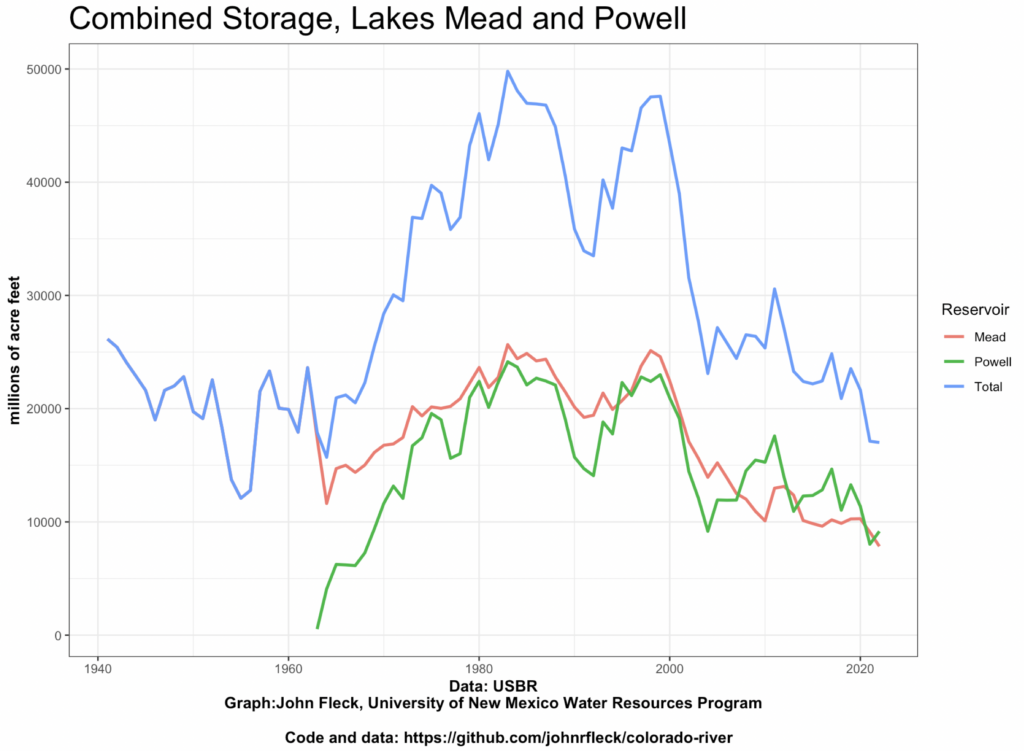
Project levels of the the Colorado River’s two primary reservoirs, circa April 2021
It’s been more than a year since I’ve been able to update my Lake Mead bathtub ring pictures, but perhaps this graph, updated with the new Bureau of Reclamation projects into fall 2022, will help us visualize what we’re up against.

The 1980 Groundwater Management Act requires an Assured Water Supply for all new development within any AMA (Active Management Area) – either from a proven 100-year local water supply, OR they are served by a utility with a CAP allotment.
When is it time to declare that a CAP contract is no longer an acceptable proof of an Assured Supply?
Lake Powell has side canyons that do not have water flowing into them at their head. It is possible to dam the entrance to those canyons and drain them. Lake Powell would be effectively narrower. Therefore, a favorable elevation could be maintained above the hydro power inlets with less water. And, evaporation would be reduced.
I suggest that dredging and transporting equipment be purchased and become part of the infrastructure.
Dredging has been a part of river maintenance for decades.
I saw one report of a plan in Egypt to do something similar just to reduce evaporation loss.
There is a radical problem and it will take a radical solution.
I am a little confused by the units on this graph and the inflow numbers. The inflow numbers mentioned in the previous posts are about 10 Million Acre-feet (MAF) per year at the most, but these total storage values are labeled as 20,000 to 50,000 Million Acre-feet. As far as I know, it did not take 5000 years to fill Lake Mead and Lake Powell, but 50,000 MAF divided by 10 MAF/year is 5000 years. Did I miss something?
Ha! Thanks Eric, I wonder how long I’ve been using that code to generate graphs with a mislabeled axis. I’ll file a bug report with myself.
Oh, so the total storage is only 20-50 MAF and the inflow they are relying on is 10 MAF/year? That means there is only 2-5 years of water in both reservoirs. That is much less than I thought.